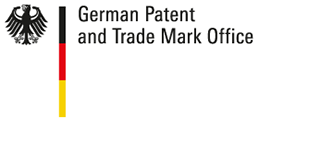The UK’s 47-year membership of the European project (spanning the EEC and the EU) formally comes to an end as of 23.00 GMT today (31st January 2020).
What does Brexit mean for Patents?
The UK’s exit from the EU will have no effect on the UK’s participation in the current European patent system, as the European Patent Office (EPO) is established under the European Patent Convention (which is an international treaty that is independent of the EU). The EPO has issued a formal notice to this effect. It is therefore “business as normal” for patents. The rights of British EP patent attorneys to act before the EPO are unaffected.
That said, Brexit may prevent implementation of the proposed Unitary Patent System that was expected to come into force in the near future (barring various outstanding legal challenges). If the unitary patent system were ever to be implemented, it is presently unclear whether the UK would be able to participate in that system.
What does Brexit mean for Trademarks and Registered Designs?
There will be a transition period beginning 1st February 2020 and ending on 31st December 2020, during which time the UK will continue to abide by EU law. As such, the UK will remain part of the EU trade mark (EUTM) system and EU registered community design (RCD) system throughout the transition period. EU trademarks and Registered Community Designs (RCDs) will continue to extend to the UK during this time.
Businesses, organisations or individuals that have applications for an EUTM or RCD that are pending at the end of the transition period will have a period of nine months from the end of the transition period to apply in the UK for the same protections. We will keep everyone regularly informed as this period draws to a close.
Upon expiry of the transition period, comparable UK rights for RCDs and EUTMs (that are already in force at that time) will be automatically created by the UK Intellectual Property Office.
The above arrangements set out the default positions that would be adopted by the UKIPO at the expiry of the transition period. Of course, it is possible that alternative arrangements may be agreed between the UK and the EU during the transition period. If alternative arrangements are agreed, we will keep everyone updated.
Irrespective of what happens in the EU/UK negotiations, Brexit will not result in the loss of any existing trademark and design rights.
And what about Unregistered Designs?
The UK will remain part of the EU unregistered community design system throughout the transition period. This means that two- and three-dimensional designs (including, for example, clothing designs and patterns) disclosed in the UK or an EU Member State can be automatically protected in both territories as unregistered Community Designs. This right provides three years of protection from copying.
Unregistered community designs arising before the end of the transition period will continue to be protected in the UK for the remainder of their three-year term.
Designs disclosed in the UK after the end of the transition period may be protected in the UK via a supplementary unregistered design, which will protect two- and three-dimensional designs for three years.
Again, this would be the default position in the UK at the expiry of the transition period.
How can Valet Patent Services help?
As detailed above, there will be no change to patent practice caused by Brexit. There will also be no changes to any trademark or design practice until around the end of 2020. What happens thereafter is largely dependent upon the EU/UK negotiations.
Valet Patent Services has offices and attorneys in both the UK and EU. As such, we are well placed to be able to continue providing our clients with the same level of IP protection in Europe as we do now.

